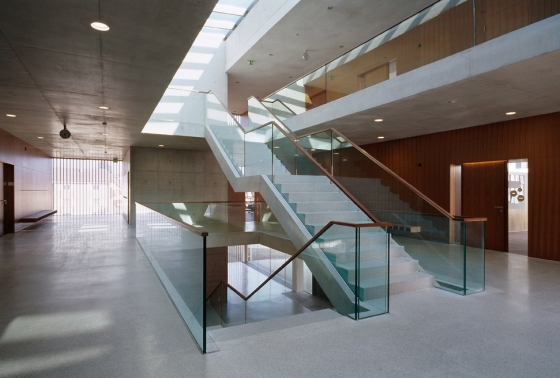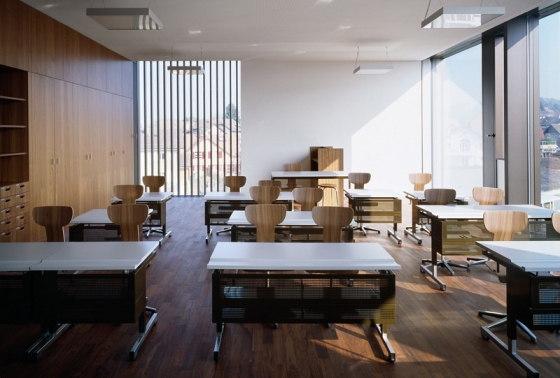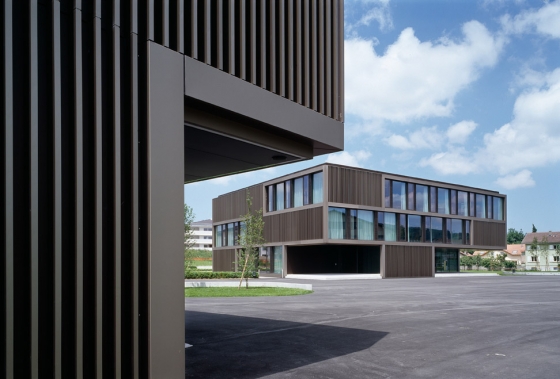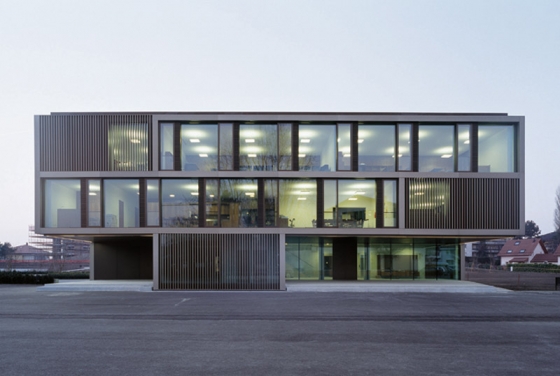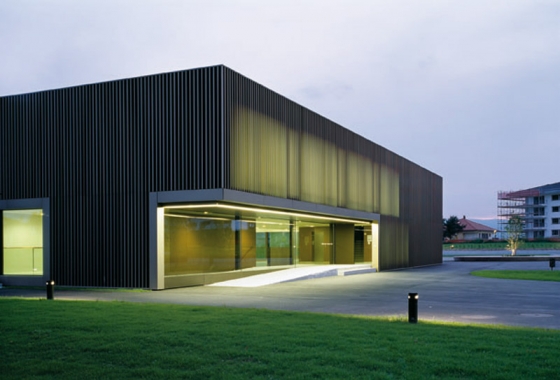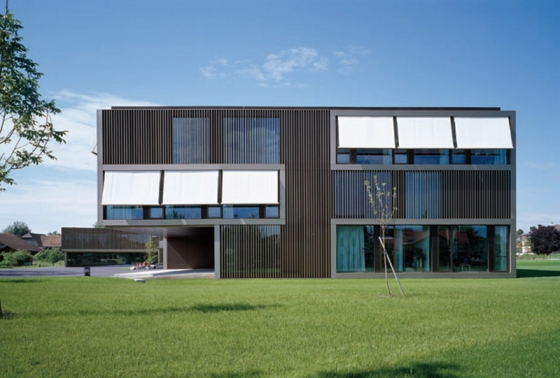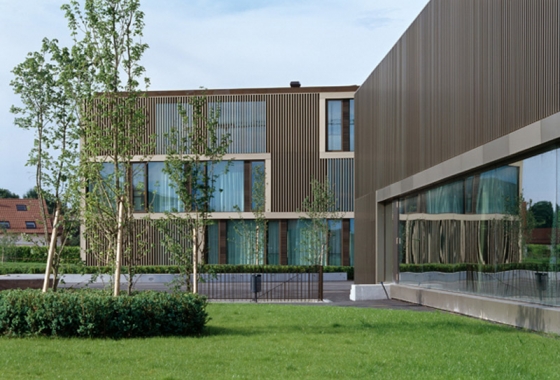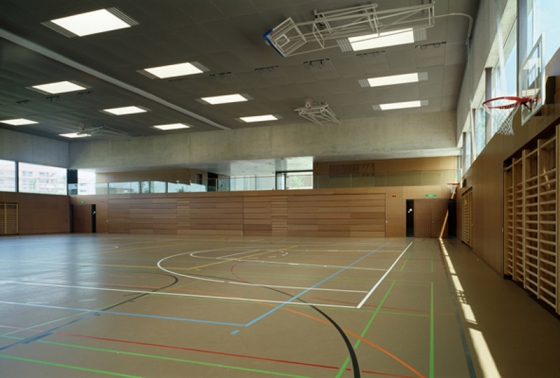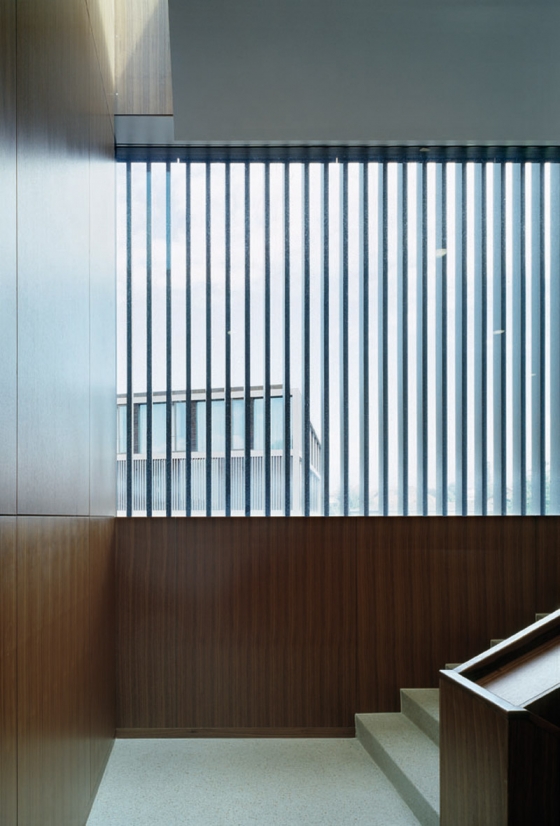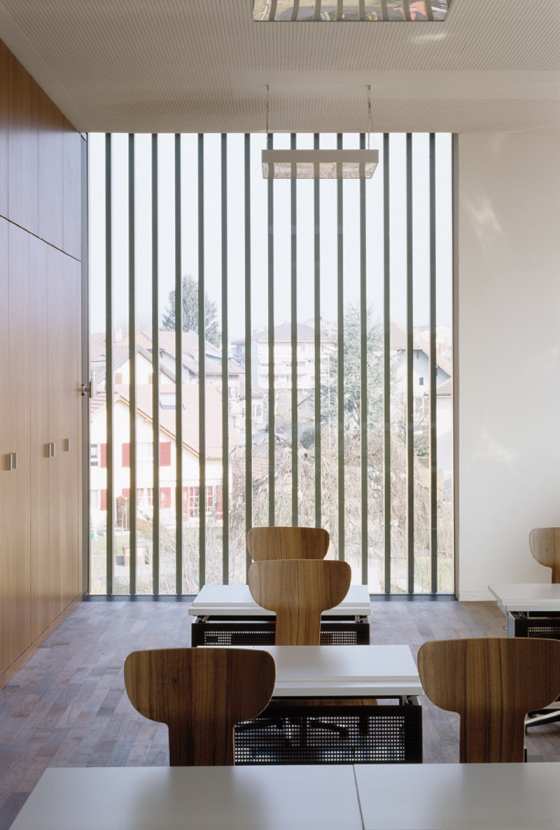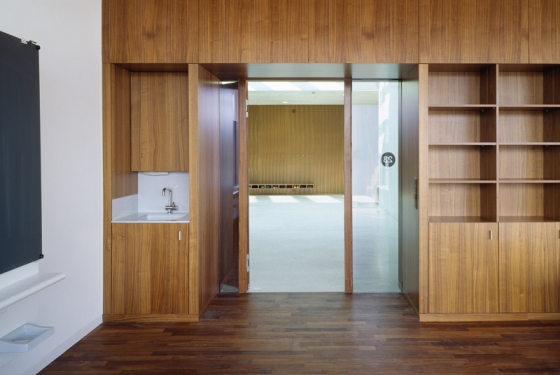The community of Cheseaux is located north of the city of Lausanne. As is often the case in villages marked by a rural past, the same municipal building houses a number of classrooms and the municipal administration.
Built in the heart of the village, slightly off the main street, this building has been preserved and reallocated as a municipal administration building. At the same time, a new school complex was built on the same lot. The site is crossed by a “green alley” which links the main street of the village to a belvedere which looks out onto the Jura mountains. The new school building is turned towards the countryside and is sited, like all buildings nearby, along this lane. The layout of the two gym halls and the school designed as two distinct structures allows the new volumes to integrate into the scale of existing structures and to define the exterior space treated until now in a residual manner. Due to its position adjacent to the school and its regular geometry, the new schoolyard, for example, develops the notion of epicentre which gives it the look of a village square. Protected from automobile traffic, this new “village square” allows to organise major events and to underscore its public function.
Covered with metal slats, the façades of the two volumes share a common expression whose dynamics derive from the varying size of their windows. Equipped with much larger windows, the gym halls are reminiscent of “large classrooms”. To confirm the plasticity of the façades, the principal openings are underscored by large frames. The expression of the different layers that make up the façade is reinforced by the two-colour treatment of the metal elements and by the sliding windows positioned behind the façade’s covering.
The multi-orientated positioning of the classrooms enables teachers and students alike to enjoy the view in all four directions. To guarantee this multi-orientated effect in the typological organisation, the static structure of the school building is ensured by concrete shear walls in the form of flags superimposed at right angles. With regard to the semi-underground gym halls, this system is reinforced by a grid of concrete columns spread over the periphery of the volume, thus allowing visitors to see to the other side of the building.


